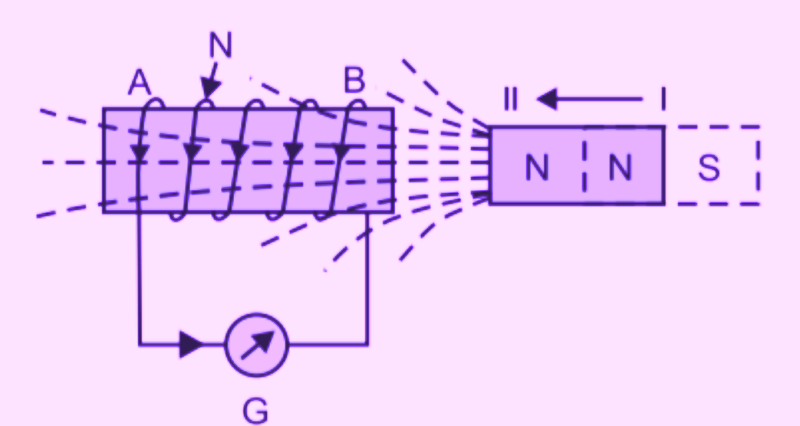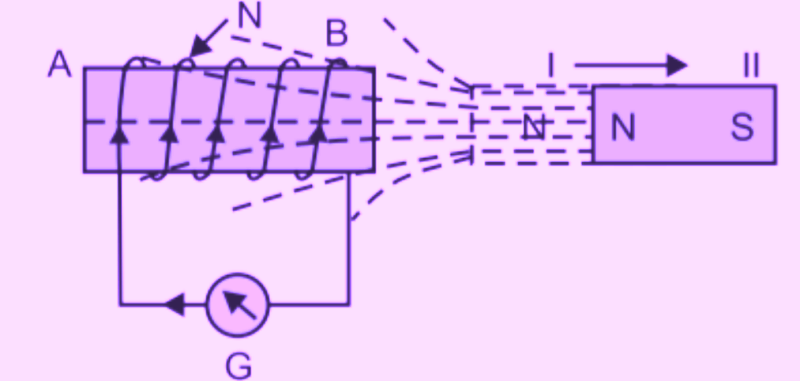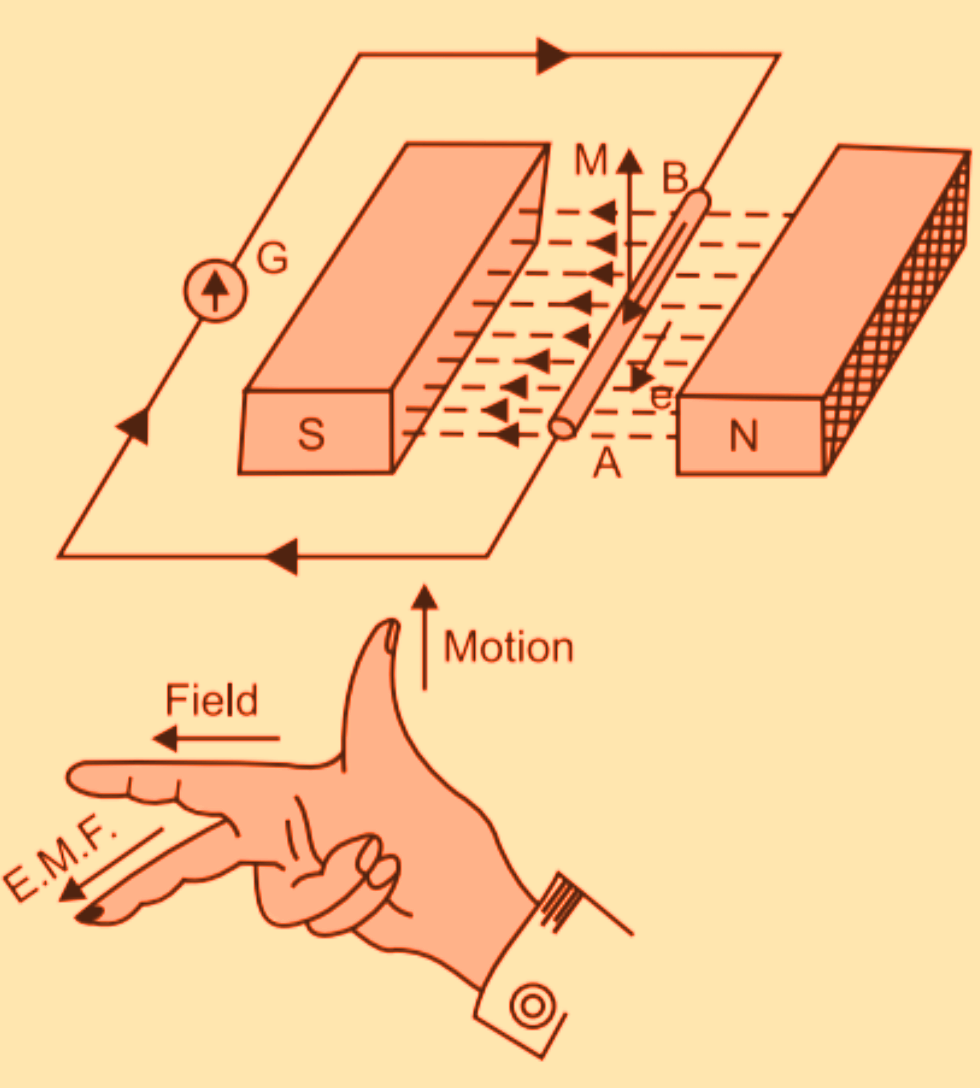Faraday law of electromagnetic induction
Faraday law of electromagnetic induction was given by the physicist named Michael Faraday. Faraday law of electromagnetic induction is one of the basic laws of electromagnetism through which we can understand how an emf is induced in a conductor (coil) when magnetic lines of forces are cut by the conductor.
Faraday law of electromagnetic induction is actually the outcome of faraday’s experiment. Faraday summed up the conclusion of his experiment with reference to electromagnetic induction in two laws known as faraday’s law of electromagnetic induction.
Electromagnetic induction is the phenomenon by which an electric current (or emf) is produced in a coil or conductor when the magnetic flux linked with the coil or conductor changes. This is called electromagnetic induction.
Faraday first law of electromagnetic induction
Statement: According to faraday’s first law of electromagnetic induction whenever the magnetic flux linking with any coil changes then an emf is produced in the coil.
It can also be stated as whenever the value of magnetic flux passing through a conductor changes then an emf is generated in the conductor. And this generated emf is retained until the value of magnetic flux is variable.
Let us consider a coil with the galvanometer connected across it is placed near a bar magnet as shown in the figure. When the north pole of the bar magnet is taken closer to the coil as shown in the diagram, then there is a deflection in the pointer of the galvanometer.

In the same way when the bar magnet north pole is taken away from the coil then again there is a deflection in the pointer of the galvanometer but this time in the opposite direction to that of the previous condition.

Here in both the condition, deflection in the pointer of the galvanometer indicates that an emf is induced in the coil.
Let us consider another condition in which a conductor is placed in the magnetic field of the permanent magnet to which a galvanometer is connected as shown in the figure.

When the conductor is moved upward or downward means conductor is moved across the magnetic field then the pointer of the galvanometer gets deflected which indicates that an emf is induced in the conductor.
In the same way, if the conductor is moved along the magnetic field (i.e moved parallel to the magnetic field), then in this case there will not be any deflection in the pointer of the galvanometer which indicates that no emf is produced in the conductor.
Faraday Second law of electromagnetic induction
This law states that “The magnitude of the induced emf in any closed circuit is equal to the rate of change of magnetic flux linkage by the circuit.
Mathematically faraday’s 2nd law of electromagnetic induction can be derived as shown below.
Let us assume,
N = number of turns the coil
t = time in second for change of flux
φ2 – φ1 = change of flux in Weber
Then, rate of change of magnetic flux linkage =N (φ2 – φ1)/t (Weber-turn/second)
Let ‘e’ = induced emf in the coil in volt.
Therefore, according to Faraday’s second law of electromagnetic induction,
Induced emf, e N (φ2 – φ1)/t
e = N (φ2 – φ1)/t (here proportionality constant is taken as unity)
In the differential form, the above equation is written as
e = -N dφ/dt (volt)
Here the negative sign indicates that induced emf acts opposite to the direction of change of magnetic flux according to Lenz’s law.
The direction of induced emf and hence current in a coil or conductor can be determined by two methods. (i) Fleming’s right hand rule (ii) Lenz’s law.
Fleming’s Right-hand rule is generally used to determine the direction of induced emf in the case of a conductor moving across the magnetic field. The case of a conductor moving across the magnetic field is discussed above in detail.
Whereas Lenz’s law is more suitable in determining the direction of induced emf in a coil or circuit when the flux linkage with the coil or circuit changes.
Lenz’s law
Lenz’s law state that the direction of induced emf or the direction of induced current in a coil or a circuit is always in such a way that it opposes the cause due to which it is produced. This law is in accordance with the conservation of energy.
The direction of the induced emf or induced current can be determined as follow.
- If the flux is decreasing, then the magnetic field due to induced emf or induced current will be along the existing magnetic field.
- If the flux is increasing, then the magnetic field due to induced current or emf will be opposite to the existing magnetic field.
Induced EMF
The emf induced in a conductor or a coil due to electromagnetic induction is called induced emf and the current which flows through the coil or a conductor due to this induced emf is called induced current.
EMF in any conductor or coil can be produced in two ways.
- Dynamically Induced EMF
- Statically Induced EMF
Now we are going to discuss both methods of production of emf in detail one by one
Dynamically Induced EMF
When a conductor is moved in a uniform magnetic field in such a way that it cuts the magnetic lines of forces and emf is induced in the conductor then this emf induced is called dynamically induced emf.
Mathematically it is written as,
e = B L V sinɵ
Here, e = emf induced
L = length of conductor in meter
B = magnetic flux density (wb/m2)
V = velocity of conductor (m/s)
ɵ = angle between magnetic flux and the conductor.
The direction of this induced emf is given by Fleming’s right hand rule. Dynamically induced emf is generally induced in the case of DC machine, synchronous motor, Induction motor, etc.
Statically Induced EMF
When a conductor or coil is placed in an alternating (increasing or decreasing) magnetic field then the magnetic flux cuts itself and an emf is induced in the conductor or coil then this type of induced emf is named statically induced emf.
In this case, the conductor or coil is static means there is no motion of the conductor or coil relative to the magnetic field, and an emf is induced so this induced emf is called statically induced emf.
Mathematically, the induced emf, in this case, is written as,
e = – N dΦ/dt
Where, e = induced emf
dΦ/dt = rate of change of magnetic flux
N = number of turns in the coil or number of conductors present
Here negative (-) sign indicates Lenz’s law.
The direction of induced emf, in this case, is given by using Lenz’s law. Statically induced emf is generally developed in the case of a transformer.
I hope you like this article on “Faraday law of electromagnetic induction”. For more articles related to electrical engineering click on the link given below.
VIEW MORE…
